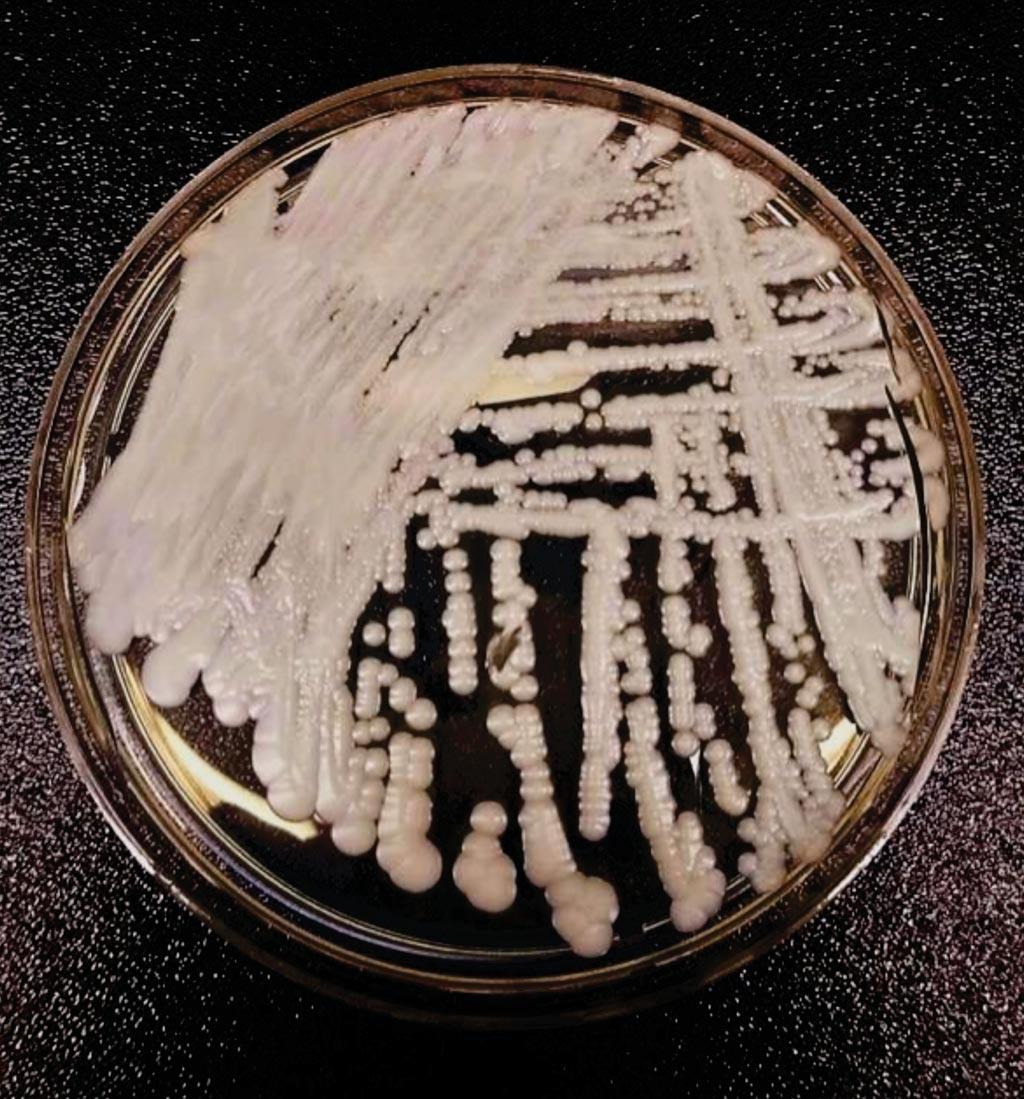Test Authorized to Identify Candida auris
By LabMedica International staff writers
Posted on 30 Apr 2018
Candida auris is a yeast that can cause serious infections in hospitalized patients such as bloodstream infections and is frequently resistant to multiple antifungal drugs used to treat Candida infections. The US Administration has authorized the first test to identify the emerging pathogen (C. auris), which can cause serious infections in hospitalized patients.Posted on 30 Apr 2018
Specifically, the US Food and Drug Administration (FDA, Silver Springs, MD, USA) permitted marketing for a new use of the BRUKER MALDI Biotyper CA system (Bruker Daltonik GmbH, Bremen, Germany) for the identification of C. auris, adding to the system’s already cleared uses for the identification of 333 species or species groups, covering 424 clinically relevant bacteria and yeast species.

Image: A strain of Candida auris cultured in a petri dish. C. auris is difficult to identify with standard laboratory methods, and can be misidentified in laboratories without specific technology (Photo courtesy of the CDC).
The FDA evaluated the use of a standard protocol for adding C. auris to the BRUKER MALDI Biotyper CA system database in conjunction with the performance data of 28 C. auris isolates (samples) and other supporting analytical studies. Findings indicated that the system can reliably identify C. auris 100% of the time. Risks associated with use of the system may include no identification or misidentification of a microorganism. C. auris isolates were obtained from various culture collections.
In addition, the FDA plans to propose to exempt certain mass spectrometry microorganism identification system processes from an additional premarket review after a system process receives a first-time FDA marketing authorization (e.g., 510(k) clearance). A proposed exemption of this kind would further meet the need for updates to device-specific organism databases and enable these mass spectrometry devices to expand their microorganism identification capabilities in the least burdensome manner.
Donald St. Pierre, acting director of the Office of In Vitro Diagnostics and Radiological Health in the FDA, said, “Although mass spectrometry technology has been a powerful scientific tool since the 1980s, it is only within that the last five years that it has been effectively used for the identification of microbiological organisms and is now a widely recognized standard of practice for clinical laboratories. The FDA has confidence in this technology and recognizes the need to rapidly address outbreaks both for C. auris and for other pathogenic microorganisms to help protect Americans through the recognition and identification of emerging infectious pathogens.”
Related Links:
US Food and Drug Administration
Bruker Daltonik










 (3) (1).png)



